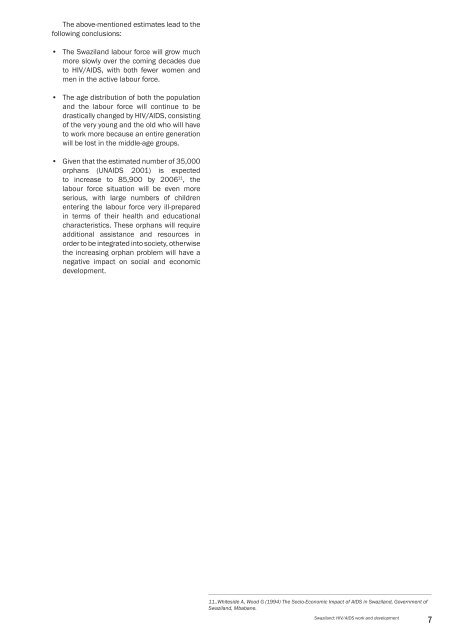HIV/AIDS+WORK Swaziland
HIV/AIDS, work and development - (NERCHA), the Info Centre
HIV/AIDS, work and development - (NERCHA), the Info Centre
- No tags were found...
You also want an ePaper? Increase the reach of your titles
YUMPU automatically turns print PDFs into web optimized ePapers that Google loves.
The above-mentioned estimates lead to thefollowing conclusions:• The <strong>Swaziland</strong> labour force will grow muchmore slowly over the coming decades dueto <strong>HIV</strong>/AIDS, with both fewer women andmen in the active labour force.• The age distribution of both the populationand the labour force will continue to bedrastically changed by <strong>HIV</strong>/AIDS, consistingof the very young and the old who will haveto work more because an entire generationwill be lost in the middle-age groups.• Given that the estimated number of 35,000orphans (UNAIDS 2001) is expectedto increase to 85,900 by 2006 11 , thelabour force situation will be even moreserious, with large numbers of childrenentering the labour force very ill-preparedin terms of their health and educationalcharacteristics. These orphans will requireadditional assistance and resources inorder to be integrated into society, otherwisethe increasing orphan problem will have anegative impact on social and economicdevelopment.11..Whiteside A, Wood G (1994) The Socio-Economic Impact of AIDS in <strong>Swaziland</strong>, Government of<strong>Swaziland</strong>, Mbabane.<strong>Swaziland</strong>: <strong>HIV</strong>/AIDS work and development7

















